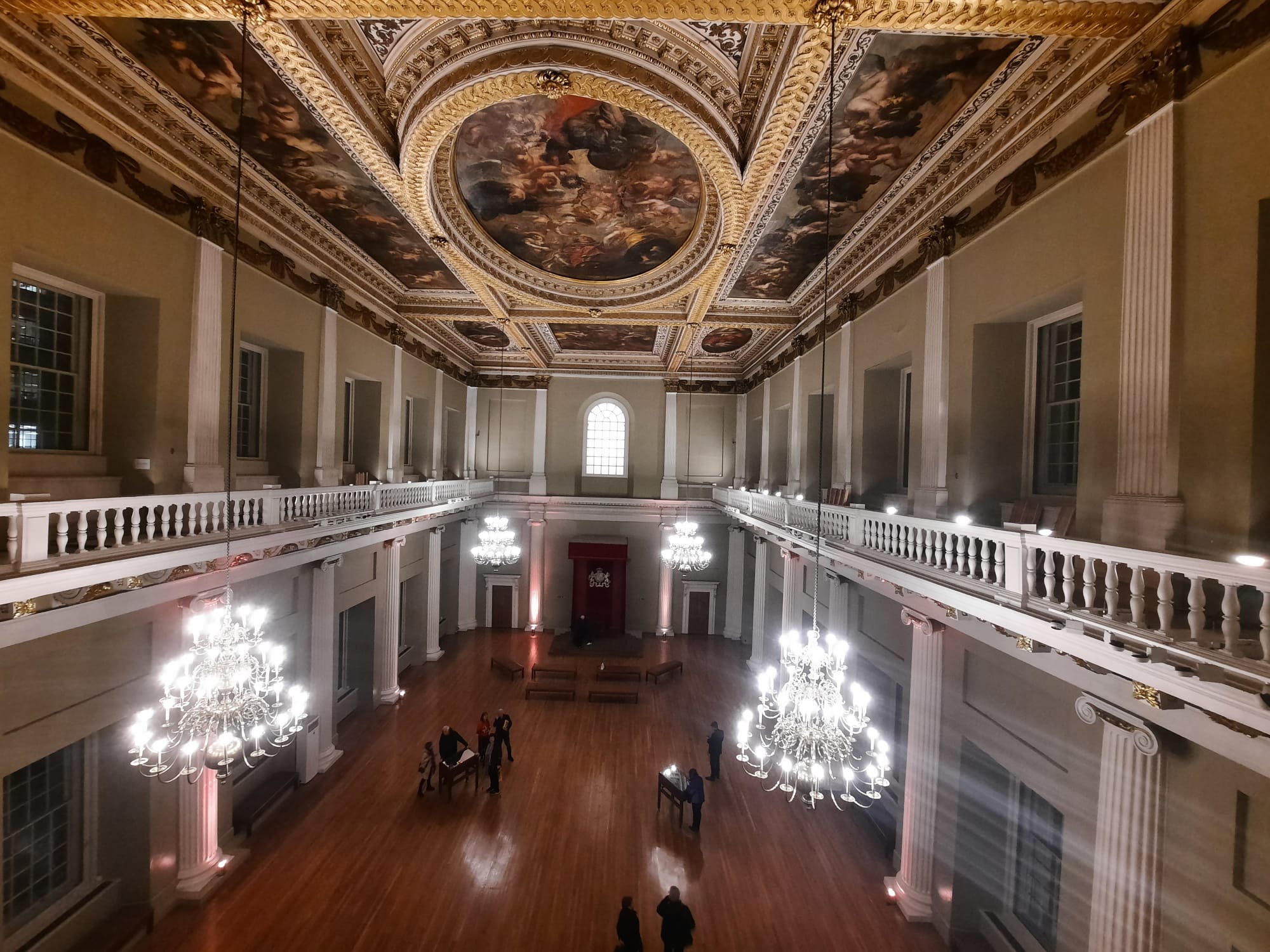Banqueting House, London
A ceiling by Rubens and the site of masques, healings and a royal execution, Banqueting House reveals its secrets on a guided tour.
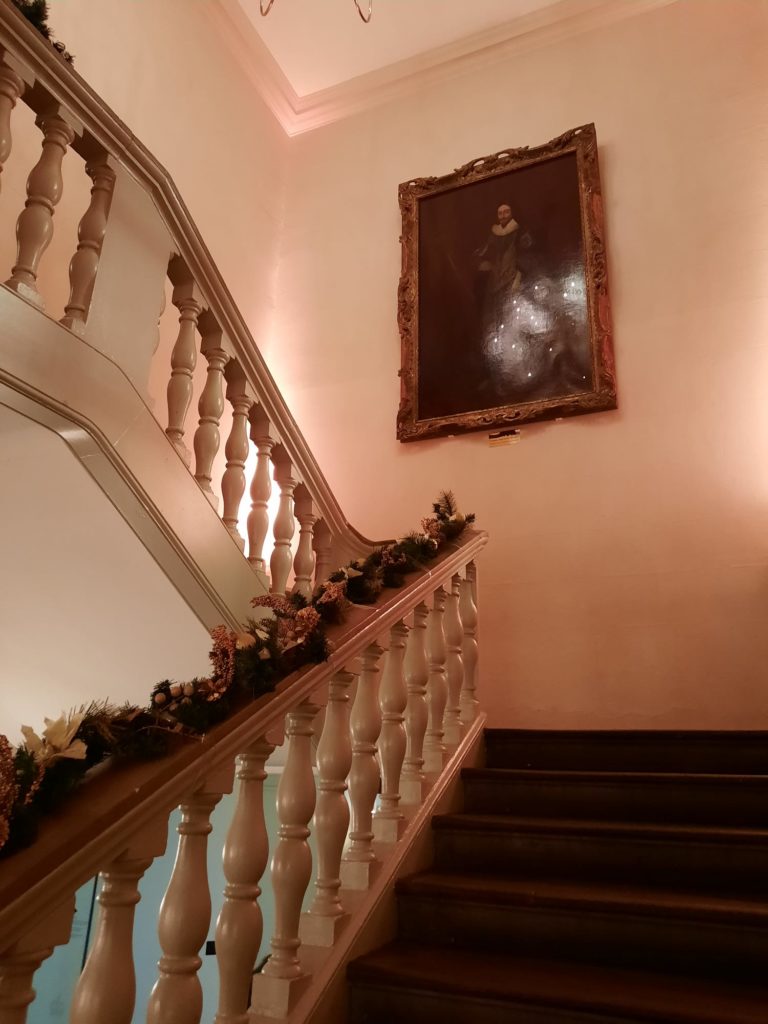
The Former Palace of Whitehall
I have to say, Whitehall is one of those street names I haven’t given much thought to, despite place names in London so often referring back to their origins. And such it is in this case. Whitehall was once the name of one of Europe’s finest palaces, the last remnant of which we are visiting today. Although the palace didn’t start out under this name.
Let us start at the beginning. The Archbishops of York used to have a palace in London, called York Place. It was not far from the Palace of Westminster (whose final remnants we’ve also seen here and here – it was gutted by fire in 1512). Cardinal Wolsey, who was also an Archbishop of York, overplayed his hand in a couple of ways. Firstly he so expanded York Place that it rivalled Henry VIII’s palaces. And then he annoyed the King, who summoned him to face charges of treason. Wolseley died of natural causes first, but that didn’t stop Henry taking York Place for himself. And you guessed it, he renamed it the Palace of Whitehall. Henry wanted Whitehall to be the biggest palace in Christendom. The name Whitehall comes from its white stone facing.
Whitehall continued to be an important palace for the remaining Tudors and the early Stuarts. Henry VIII married some of his wives here. Whitehall hosted debuts of some of Shakespeare’s plays. There were several iterations of its Banqueting House, which we will come to shortly. By 1650 it was the largest collection of secular buildings in Europe, fulfilling Henry’s ambition and then some. But it all came to an end in the late 17th century. After a first fire in 1691, a second, more devastating one broke out in 1698. William III (of William and Mary, but Mary had died at this point) ordered Christopher Wren to save Banqueting House at all costs. He managed to, but the rest of the palace, aside from a few buildings that were later demolished, was ruined.
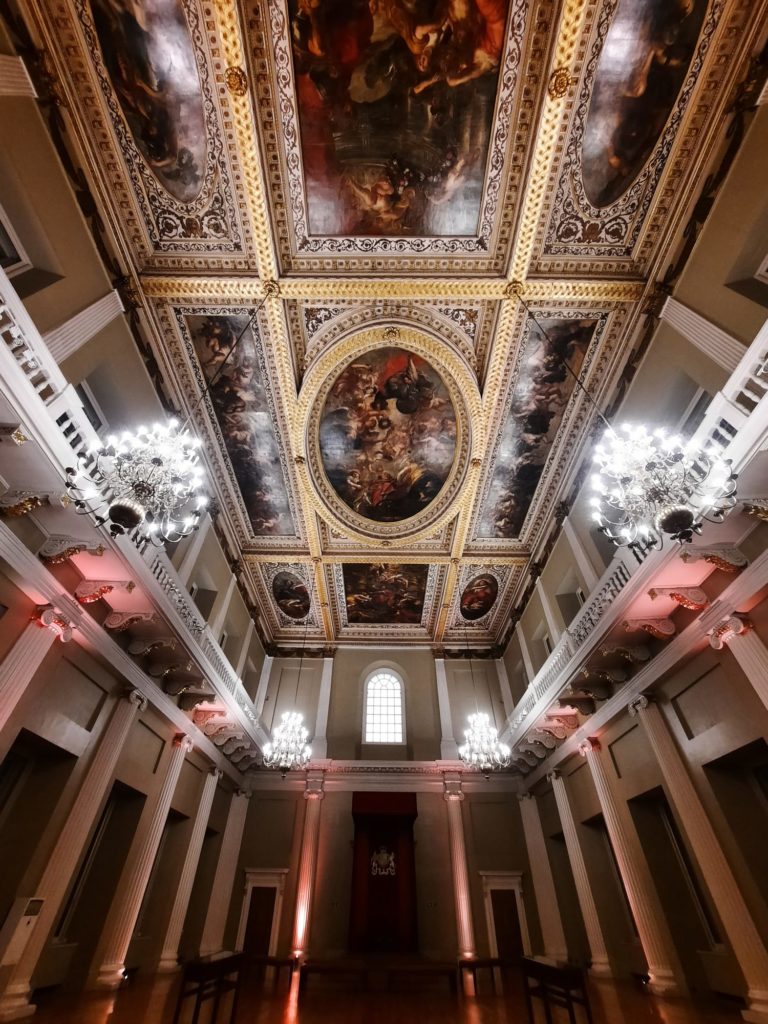
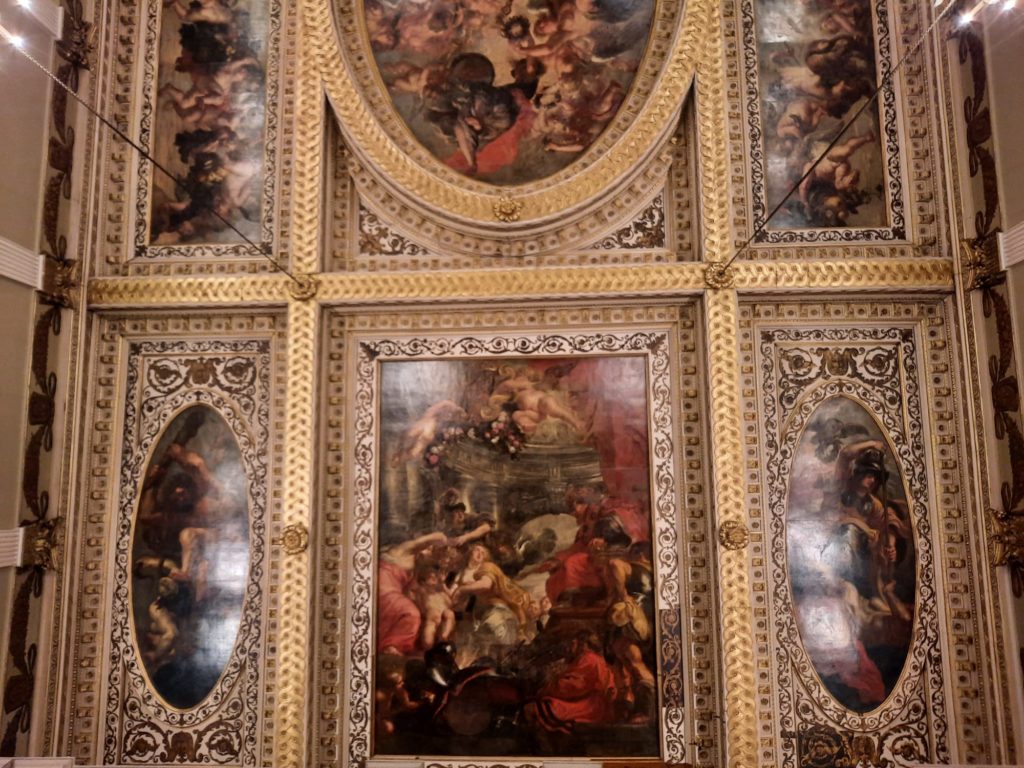
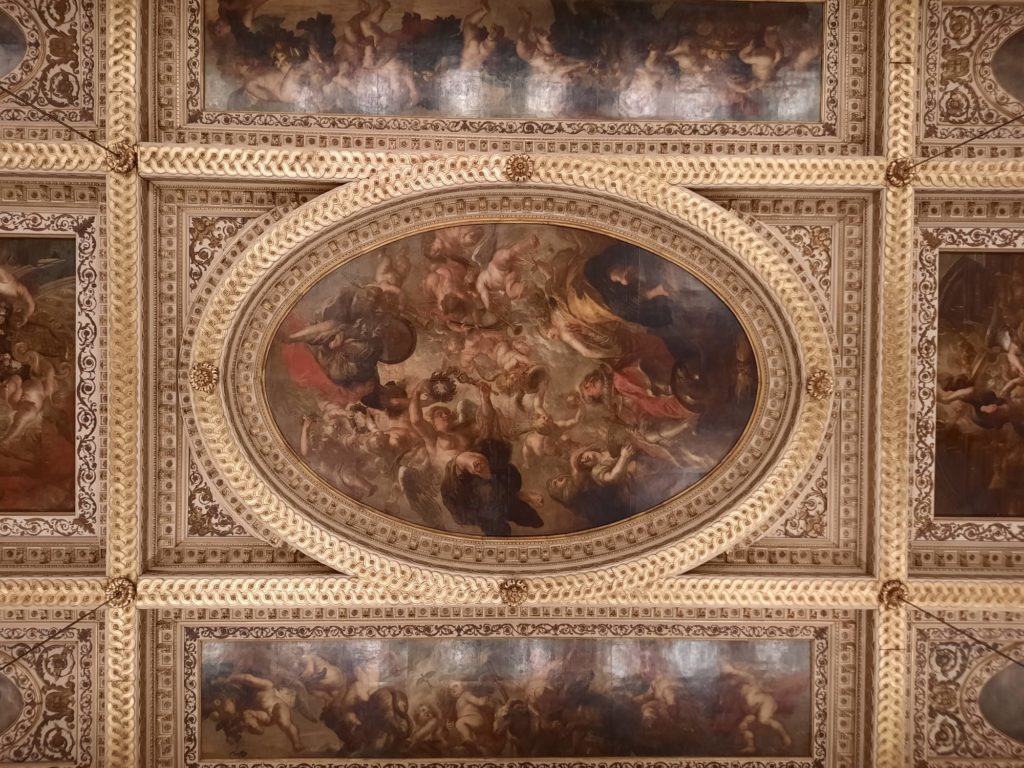
Banqueting House
So what was all the fuss about Banqueting House, then? Well I think the first thing to know is what exactly a Banqueting House is. Or was. It was once common in royal circles. A sort of performative place for masques, dinners, plays and so on. In this period there was still an expectation that the monarch lived in public, so a gallery around the top was primarily for that public to come and watch their king (or queen) eat, drink and be merry.
There were a couple of Banqueting Houses at Whitehall before this one. The first was sort of temporary, made of brick, timber and canvas. James I ordered a permanent version to be built, but was displeased with the results (too many columns blocking the views). He put Inigo Jones in charge of a third and final version. Jones applied his learnings about Palladian architecture, making this a double cube above a vaulted undercroft. James I was thrilled, and entertained here frequently. He also initiated conversations with Rubens when the latter was in England on diplomatic business (strange sideline for an artist but OK…), but it was his son Charles I who procured works by Rubens for Banqueting House’s ceiling and eventually paid for and installed them. Incidentally Charles stepped out of a window at Banqueting House on his way to his execution.
It is because of the Rubens ceiling that Banqueting House is such a treasure. It’s unique in having a full set of paintings by the artist still in situ. Thank goodness Christopher Wren saved it. He did so by dynamiting several buildings as a firebreak, and having some bricklayers do quick (and risky) work to block up the windows and stop flames coming in. Banqueting House remained a royal site after Whitehall Palace was no more. But it became a royal chapel rather than a place of entertainment, hosting amongst other events the laying of hands by the monarch to prevent/cure “the King’s Evil”. And Victoria was the last monarch to distribute Maundy Thursday alms from here.
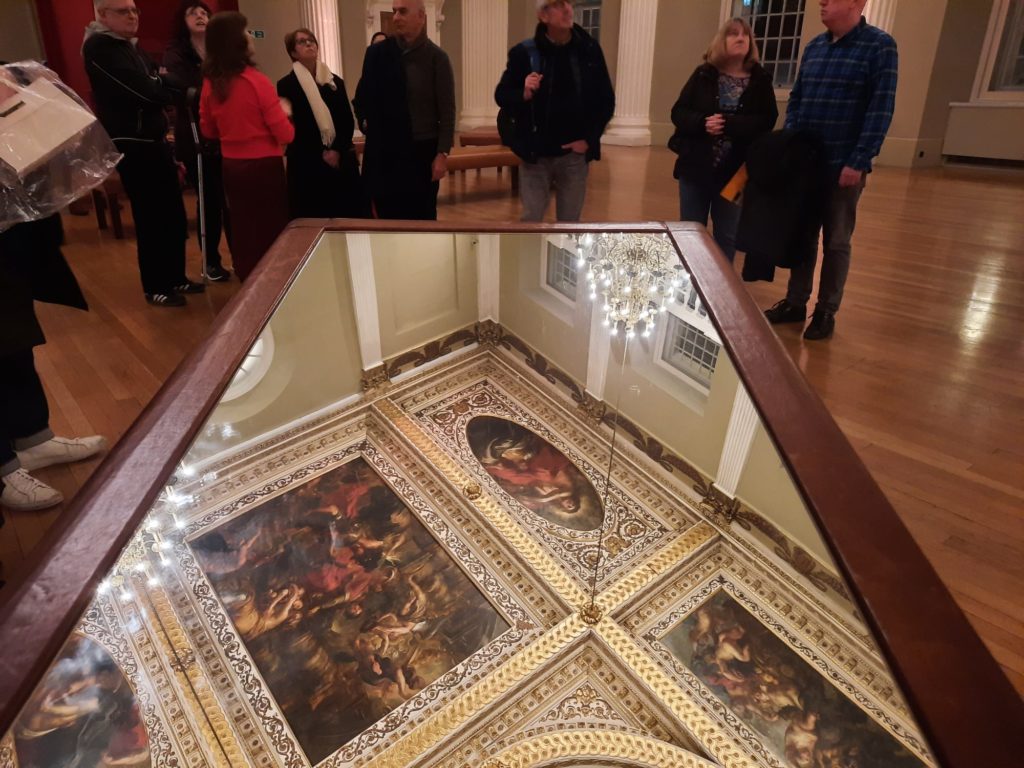

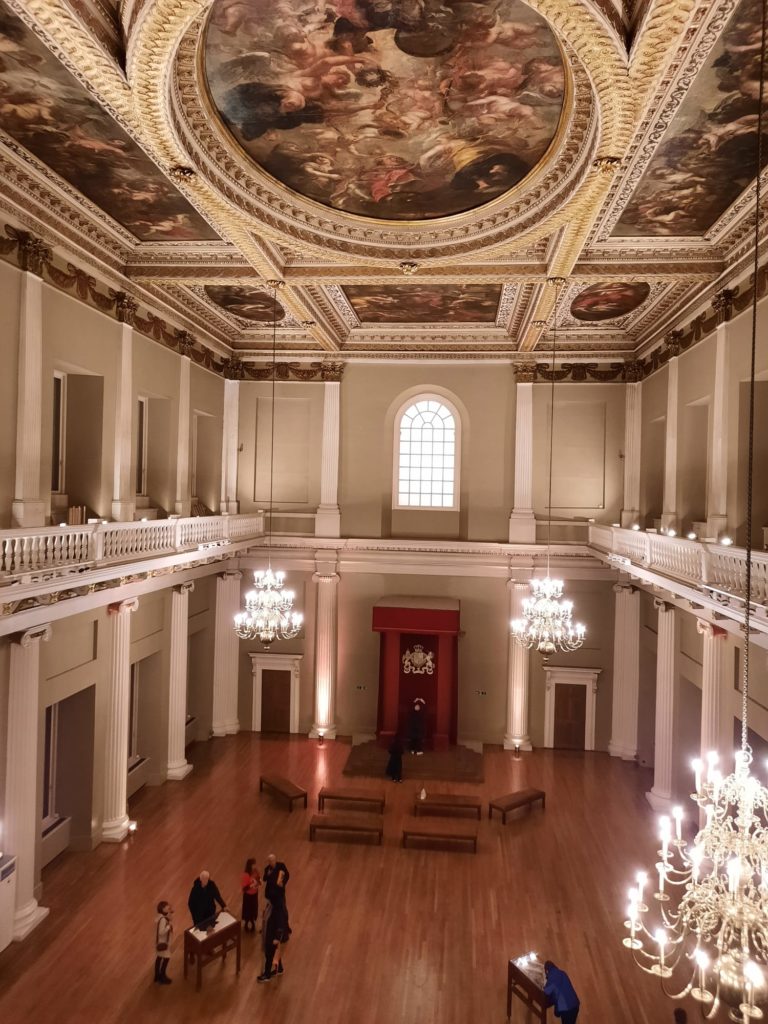
Visiting Banqueting House
Banqueting House is cared for today by Historic Royal Palaces, who also look after the Tower of London and Hampton Court Palace amongst other sites. Visits are by guided tour, unless you’re lucky enough to know someone renting it as an events space. Tours seem to sell out well in advance, so do plan your visit. This also enables you to select a theme for your tour, as there are several different focuses. You can do a general historic tour, a tour themed around a specific event like Charles I’s execution, or a themed tour. I did one of the latter – despite the timing of my post I actually visited not long before Christmas so I enjoyed a Christmas themed tour.
We started in the undercroft where we had a well-researched explanation on Stuart festive traditions and foods, as well as hearing the history of the building and Whitehall Palace. We then went upstairs to see the Rubens ceiling. After the anticipation built during the start of the tour it’s a satisfying moment walking through the doors and seeing the paintings in all their splendour. Whilst upstairs our hosts talked more about specific events held in Banqueting House, before we went up another staircase to pop out on the balcony for a different perspective.
Banqueting House is a nice size to visit – I actually think it would be a great thing to do with friends or relations visiting London as even those who have been to the city before are unlikely to have seen Banqueting House. And do keep an eye on their themed tours throughout the year: it’s nice to have a different perspective, and also allows Historic Royal Palaces staff to demonstrate their passion for the places they so carefully preserve.
Salterton Arts Review’s rating: 3.5/5
Trending
If you see this after your page is loaded completely, leafletJS files are missing.

